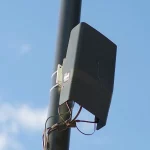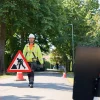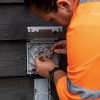Mast Sharing or Rural Roaming – Solving UK Rural 4G Mobile Coverage
The Country Land and Business Association, which represents 30,000+ landowners (farmers and businesses) across England and Wales, has said that “forcing mobile operators to adopt rural roaming” may be the only way to deliver significantly better 4G coverage in rural areas. But operators now favour a barter system of mast sharing.
The idea of Rural Roaming is simple enough. Essentially, whenever you pass into a rural area where your mobile operator can’t get a service then the signal would be allowed to roam onto another operator’s network (assuming the signal is strong enough and present). This approach is similar to when you go abroad and your mobile signal can roam on to different networks.
In theory this could produce a significant improvement in service coverage and that’s important because, according to Ofcom, geographic 4G (mobile broadband) coverage from all UK operators is currently 97% in urban locations but only 62% in rural areas. The overall outdoor geographic coverage of 4G is 66% (up from 43% a year earlier) from all four operators or 91% from just EE (BT).
Advertisement
All of this presents a problem for EE, which has invested a lot to build a modest advantage in rural coverage. The operator has so far shunned a pure rural roaming model (here) because they may view it as giving a free ride to rivals that haven’t made the same investment (excluding ESN masts as those can be shared), not to mention stifling the attraction of future investments (extending rural cover isn’t very profitable).
Mark Bridgeman, CLA Deputy President, said:
“Since 2002 the CLA has been campaigning for a universal pledge on digital connectivity and we’re delighted to finally see this on broadband. While we need to wait to see how this is met, great strides have been taken towards unlocking the potential of the rural economy.
We need to learn the lessons from the successes with broadband where government and stakeholder consensus, as well as leadership by the regulator, achieved real wins for those who live or work in the countryside. There is no reason why a similar approach should not be applied to rural 4G, starting with forcing mobile operators to adopt rural roaming.
The CLA is ready to work with operators and Ofcom to work on the tangible steps which need to be taken to ending the urban-rural digital divide.”
Meanwhile the Government wants to see mobile networks achieve 95% geographic coverage of the UK by 2022 (here), although their manifesto commitment wasn’t specific about whether this meant 4G. At the same time Ofcom’s plan to auction off the 700MHz band later this year includes a new obligation (here), which requires two operators to deliver geographic coverage of 90% but this is more intended for future 5G services and those will take years to deploy.
Despite these issues a new report in the Sunday Telegraph appears to be hinting that EE, Vodafone, O2 and Three UK may now be working toward an agreement on a new approach to solving the coverage problem. The plans centre around the possible establishment of a “barter system,” which would allow operators to share masts more easily in areas of only partial coverage (i.e. sharing of mast space for radio kit, provided this is reciprocated by both sides – Ofcom acting as referee).
The idea of mutually beneficial mast sharing could, if priced fairly, prove to be a useful over the longer-term and it may even result in fewer masts being needed to cover the same area (i.e. saving operators money). On top of that it would avoid the need for tougher regulations, which could be quite difficult to introduce and we suspect may also end up being delayed by lengthy legal challenges (as seems to be customary in this industry).
Advertisement
However, it’s unclear whether the CLA would support this alternative proposal (not that it matters to the plan itself), particularly as it suggests that fewer masts might be needed in the future and that means less rental income for land owners. Similarly Ofcom may be wary of the impact that such a system might have upon today’s aggressively competitive market, but we think it shows promise and a compromise should be possible (depending upon the terms). In theory such a mast sharing agreement could be finalised this Spring.
Mark is a professional technology writer, IT consultant and computer engineer from Dorset (England), he also founded ISPreview in 1999 and enjoys analysing the latest telecoms and broadband developments. Find me on X (Twitter), Mastodon, Facebook, BlueSky, Threads.net and Linkedin.
« Post Office ISP Discounts UK Home Broadband and Phone Prices

















































Comments are closed